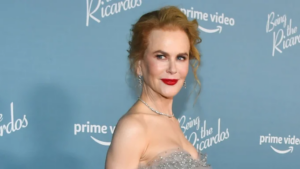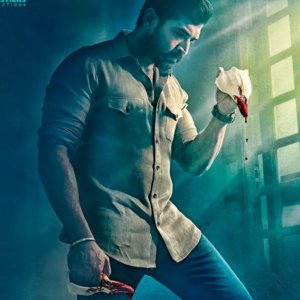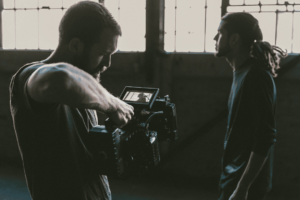Mise-en-scène is a French term meaning “Putting on stage”. It combines elements such as lighting, composition, art direction, costuming, makeup, and texture. Mise-en-scène is almost everything that happens in front of a camera in a particular scene. It starts with a screenplay illustrating action, dialogue, and the details of particular visual elements such as costumes, properties, period, and description of settings.
Mise-en-scène is the art of designing and organizing the setting and actors in the scenes for a drama or film, respectively. Mise-en-scène finds expression in narrative storytelling through direction and in visual arts through theme, cinematography, and storyboards. Also, mise-en-scène signifies single scenes that characterize the film.
Mise en scène is an essential and foundational part of film theory. Knowledge on these elements will be useful to understand the tone of a film that helps,
- Movie Director
Mise en Scene – Introduction to Film Analysis
Key elements of Mise En Scène
- Composition
- Production Design
- Lighting
- Costuming
- Hair and Makeup
- Film Texture
The Narrative Film: Mise en Scene
Composition: Framing of a shot is one of the fundamentals of mise en scène, which can be determined during a film’s storyboarding phase. The role of a storyboard artist is to work with a film’s director and at times with the writer and visually illustrate, draw, or graphically design storyboards of each scene in a screenplay. This is one of the phases of pre-production during which compositions, framing, and camera movements are determined before shooting. Therefore, irrespective of Mise En Scène’s style, one can evaluate it during the storyboarding phase and create it on set with camera angle and moves.
Some directors want the story to take the lead over style without the compositions interfering with the acting and dialogue. So, they will like to work in steady and traditional wide shots, close-ups, medium shots, and single shots.
However, some directors like more fluid, active tales and shots with more movement where they can express story and style equally. These directors prefer for kinetic and frenetic shots and opt for Steadicam, shoot hand-held, or in jib and dolly.
Production Design: Some stories cannot just rely on costumes, lighting, and props alone. Visual merits are also essential to produce a believable story that will connect with viewers. In addition, the setting created by art direction should strengthen mise en scène, which can be done with proper locations and production design.
Lighting: Lighting will elevate an intended Mise En Scène. For instance, the film Drive depicts a smart usage of Mise En Scène. The colors represent the tone of the world and the inner workings of the main character. Mise en scène shows the inside and outside of the chosen world.
Costuming: Costumes have to be theatrical and elaborate as they add value and mood to the Mise En Scène. Costume choices strengthen the quality and tone of the film. Films such as The Dark Knight, Charlie and the Chocolate factory, Back to The Future represent the importance of costumes. However, while selecting costumes, ensure that they match with the created mise en scène.
Hair & Makeup: Hair and Makeup bring the characters to life according to the styles of a particular era. For a politically charged fictional world, the characters should look gaudy and brave, filled with flair. In the film, The Hunger Games, Katniss Everdeen’s look represented the life of a country girl. Still, she would look theatrical and warrior-like when she was put on display. This film is an excellent personification of mise en scène as the character’s hair and makeup change along with the character development throughout the movie.
The Transformative Power of Makeup in Film
Film Texture: Films can have various final looks depending on the selected video camera or type of film stock and the usage of post-production effects and filters before the final screening. Different film stocks offer fine, contrast, or grainy textures and are often preferred by Traditional Directors of Photography. When it comes to video, it is recommended to shoot the best quality video possible and then going for grainy or fine-looking post-production. While shooting a film or video, the array of sensitivity of film stocks, HD Cameras, or latitude is often considered. It is vital to consider how a film or video reacts to light before shooting.
Mise-en-scène embodies all elements needed for the audience to help with the willing suspension of disbelief. The above-given details will efficiently captivate the viewers to enjoy the movie regardless of the film’s genre. Furthermore, Tim Walker’s usage of mise en scène blurs the line between reality and fantasy. He explains, “I create worlds and place them in front of you.”
15 Principles of Mise En Scène
Different visual elements and styles in a scene convey different types of stories. Shohawk has listed 15 principles that will help filmmakers for the effective employment of mise en scène.
Mise En Scène Examples
Mise-en-scène in ‘The Shining’













